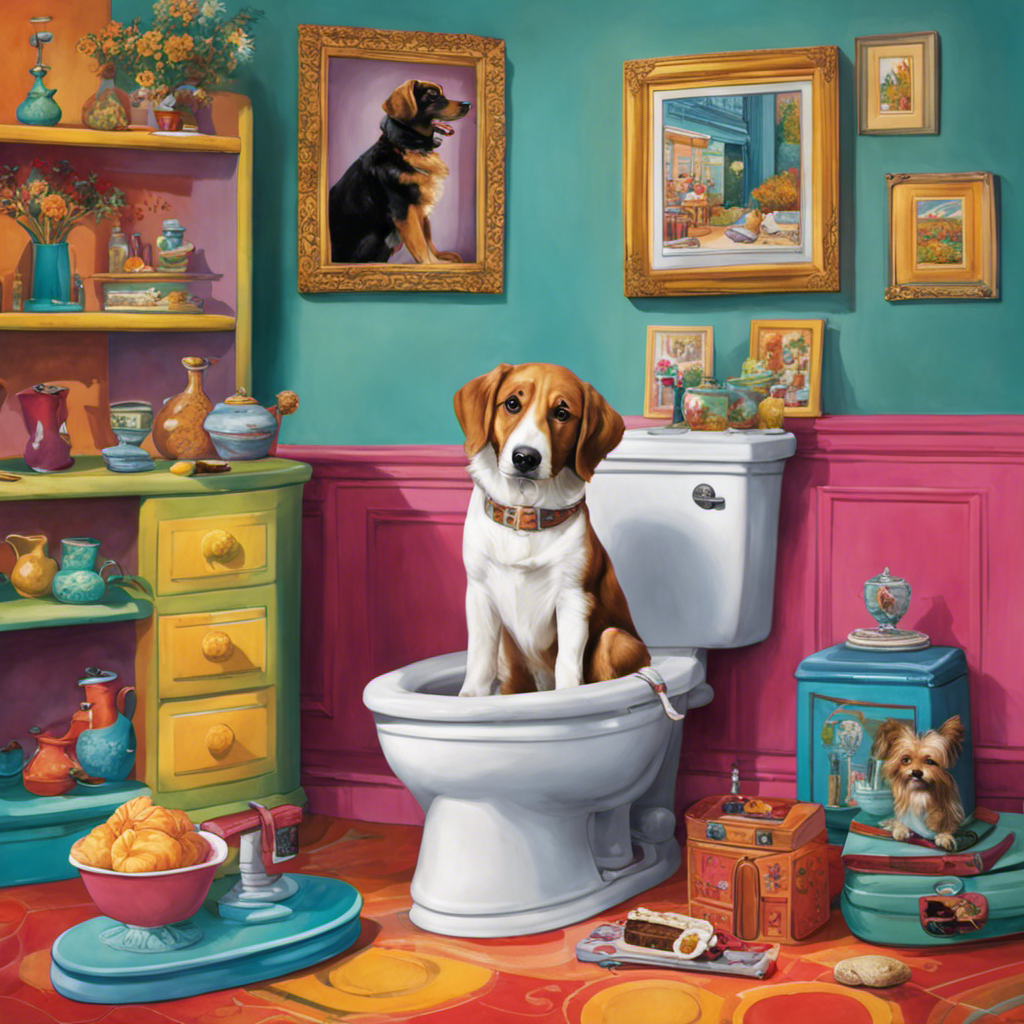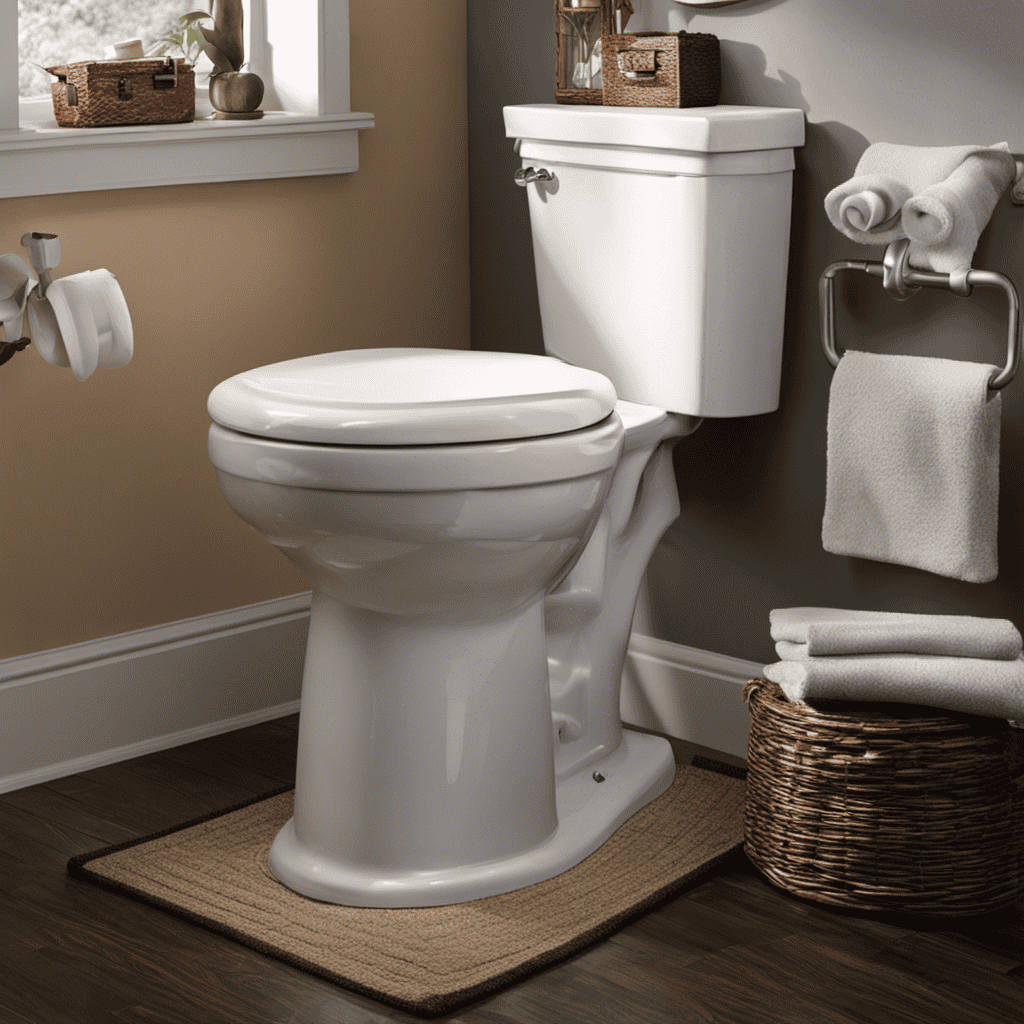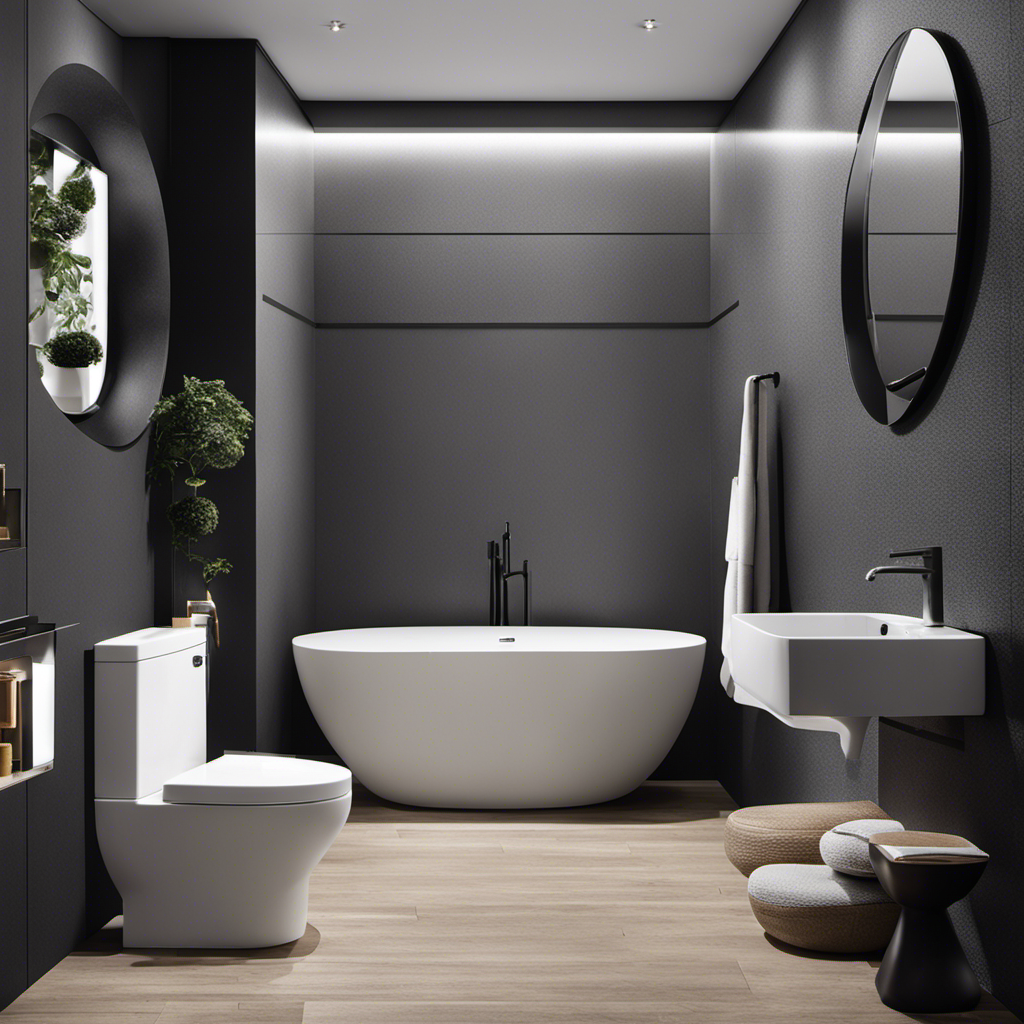I’ve always dreamed of having a dog who can use the toilet. Just imagine, no more early morning walks in the rain or late-night trips outside in the freezing cold. It sounds like a dream come true, doesn’t it?
Well, I’m here to tell you that it’s not just a dream – it’s actually possible to train your dog to use the toilet. In this article, I’ll walk you through the step-by-step process of toilet training your furry friend, so you can say goodbye to those messy accidents and hello to a cleaner, more convenient way of life.
Key Takeaways
- Toilet training dogs offers benefits such as reducing the risk of harmful bacteria and parasites, preventing ingestion of harmful chemicals, saving time and effort in cleaning up after the dog, and eliminating the risk of stepping on a mess.
- There are various methods for toilet training dogs, including crate training, paper training, bell training, and considering the dog’s preferences and learning style. It is also important to gradually transition between methods as needed.
- When setting up a toilet training area for your dog, choose an easily accessible designated spot, use dog potty pads for indoor training or designate an outdoor area, consider living situation and preferences, and ensure the area is clean and comfortable for the dog.
- To successfully toilet train your dog, establish a schedule for regular bathroom breaks, use positive reinforcement with treats and praise, be patient and consistent, redirect the dog to the designated spot if accidents happen, and establish a routine and stick to it.
Benefits of Toilet Training for Dogs
You’ll be amazed at the benefits of toilet training your dog. Not only does it make your life easier, but it also has numerous health advantages for your furry friend.
Let me tell you about some of them.
First and foremost, toilet training reduces the risk of your dog picking up harmful bacteria and parasites from outdoor spaces. It also prevents them from ingesting harmful chemicals found in grass or other substances they may come into contact with.
Additionally, toilet training eliminates the need for you to clean up after your dog outside, saving you time and effort. It also eliminates the risk of stepping on a surprise mess left behind.
Overall, toilet training provides both health advantages and convenience factors for both you and your dog.
Choosing the Right Toilet Training Method
Selecting the proper method for toilet training your furry friend can make the process much more efficient. When it comes to toilet training aids, there are several options available. Here are three methods to consider:
-
Crate training: This method involves confining your dog to a crate when you are unable to supervise them. Dogs naturally avoid soiling their sleeping area, so this method can help teach them to hold their bladder and bowels.
-
Paper training: This method involves placing puppy pads or newspapers in a designated area for your dog to use as a bathroom. Gradually, you can move the pads closer to the outside door to encourage them to go outside instead.
-
Bell training: This method involves teaching your dog to ring a bell when they need to go outside. By associating the sound of the bell with going to the bathroom, your dog can learn to communicate their needs effectively.
Setting Up a Toilet Training Area for Your Dog
When setting up a toilet training area for your pup, it’s important to choose a designated spot that is easily accessible. I recommend using dog potty pads or outdoor potty options, depending on your preferences and living situation.
Dog potty pads are convenient for indoor training, especially if you live in an apartment or have limited access to outdoor spaces. They are absorbent and can be easily disposed of. On the other hand, if you have a yard or access to an outdoor area, you can designate a specific spot where your dog can relieve themselves. This can be a patch of grass or even a specific area with gravel or mulch.
Transitioning between indoor and outdoor options can be done gradually, depending on your dog’s progress.
Now that you have set up the training area, let’s move on to the step-by-step guide to toilet training your dog.
Step-by-Step Guide to Toilet Training Your Dog
Once you’ve designated a specific spot for your pup to relieve themselves, it’s essential to establish a consistent routine for successful toilet training. Here is a step-by-step guide to help you train your dog to use the toilet effectively:
-
Set a schedule: Create a regular toilet training schedule for your dog. Take them to the designated spot at specific times throughout the day, such as after meals or naps.
-
Use positive reinforcement: Reward your dog with treats and praise when they successfully use the toilet area. This positive reinforcement will reinforce the desired behavior.
-
Be patient and consistent: Toilet training takes time and patience. Stick to the schedule and be consistent with your training techniques. If accidents happen, remain calm and redirect your dog to the designated spot.
Troubleshooting Common Challenges in Toilet Training Dogs
To troubleshoot common challenges in toilet training your dog, it’s important to identify any patterns or triggers that may be causing accidents. One of the most common mistakes dog owners make is not being consistent with their training methods.
Dogs thrive on routine, so it’s crucial to establish a consistent schedule for bathroom breaks. Additionally, be sure to praise and reward your dog when they eliminate in the appropriate spot, as positive reinforcement is key to successful training.
If accidents do occur, it’s important to handle them properly. Never punish your dog, as this can create fear and hinder their progress. Instead, clean up accidents thoroughly to remove any lingering scent, and consider using products specifically designed to deter dogs from eliminating in certain areas.
Conclusion
After going through the process of toilet training my dog, I can confidently say that it was a breeze! Who would have thought that teaching your furry friend to use the toilet could be so simple?
Not only has it saved me from the hassle of cleaning up after accidents, but it has also given my pup a sense of independence and responsibility.
So, if you’re tired of dealing with those pesky pee pads or constantly running outside, I highly recommend giving toilet training a try. You won’t believe the difference it can make!










